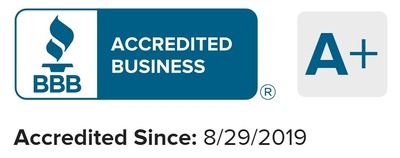Timing is everything when it comes to keeping your rental property occupied. And that is why understanding when the peak rental season occurs is crucial to minimize vacancies and attract quality tenants. Peak rental season refers to the time of year when tenant activity is at its highest. For most rental markets, this season starts in May and runs through September, coinciding with the end of school years, college graduations, and job relocations. Families and professionals tend to move during the summer break, making this the busiest period for rentals.
According to industry reports, nearly 70% of all relocations occur between Memorial Day and Labor Day. That means more demand leading to more competition. So, if you want your property to remain competitive, attractive and fully rented in these peak seasons, proper preparation is most critical.
With over 20+ years of experience in property management, I’ve seen firsthand what works and what doesn’t when preparing for the peak season. From marketing strategies to property improvements, small changes can make a big impact in attracting the right tenants. In this article, you’ll learn how to position your rental for success, maximize visibility, and stay ahead in a competitive market.
Let’s dive in!
Maximize Your Rental Income with Hassle-Free Property Management
Request a Service →When Is Peak Rental Season?
Peak rental season falls between May and September, with crazy demand hitting its peak during the summer months. There are several reasons behind this time of year to see the most activity in the rental market.
For families with children, summer is the most convenient time to move as it allows them to settle in before the beginning of new school year. College students and recent graduates also contribute to the high demand, either moving for school or relocating for new job opportunities.
Additionally, many companies align their hiring cycles with the beginning of the fiscal quarter, leading to an influx of employees looking for rental housing. Moreover, the warmer weather conditions also makes moving easier, compared to dealing with winter’s snow, rain, or freezing temperature.
Conversely, off-peak rental seasons, typically from October through April, see reduced activity. Factors such as colder weather conditions, ongoing school sessions, and fewer job relocations contribute to this slowdown. However, this period can present opportunities for landlords to attract tenants seeking vacation rentals or those looking for off-season deals.
Benefits of Preparing for Peak Rental Season
1. Higher Rental Rates
Peak rental season mostly coincides with increased demand for rental properties. You can often charge higher rent, increasing profitability due to this demand. You can also capitalize on this opportunity by ensuring your property is ready to attract tenants willing to pay premium rates.
2. Faster Leasing
During the prime rental season, renters are actively looking to secure a place, meaning properties often get leased out faster. Proper preparation, such as marketing your property early, conducting repairs, and staging it for showings, can help you attract new tenants quickly and reduce vacancy periods.
As one veteran OKC property manager notes: “Many landlords prepare for this seasonal shift by adjusting their marketing strategies accordingly. Listing properties at least 30 days in advance of peak season gives us a stronger applicant pool and better rent prices.”
3. Attracting Quality Tenants
The influx of renters during peak season means you’ll have more potential tenants. With more options, you can be selective and find tenants with strong rental histories, stable incomes, and positive references. By preparing in advance, you can set strict screening criteria and make sure your property appeals to the right type of renters.
4. Better Lease Terms
When demand is high, you are in a stronger negotiating position with potential tenants. This allows for more favorable lease terms, such as longer lease periods, stricter terms on rent payments, or specific rules about property usage.
5. Maximized Marketing Reach
Proper preparation gives you the chance to market your property strategically. By getting your rental listing out early and using various marketing channels (online platforms, social media, etc.), you can reach a larger audience of renters. This increases the chances of finding new tenants quickly and receiving multiple applications.
Maximize Your Rental Income with Hassle-Free Property Management
Request a Service →8 Steps to Prepare for Peak Rental Season
1. Evaluate the Current Condition of Your Properties
Before the rental season heats up, conduct a thorough evaluation of your properties. This will help you identify necessary repairs or upgrades that will make your rentals more appealing to potential tenants.
- Inspect the Interior and Exterior: Check for any wear and tear, and focus on high-traffic areas like kitchens, bathrooms, and living rooms. Pay attention to curb appeal; a fresh coat of paint or landscaping improvements can make a huge difference.
- Upgrade Appliances and Fixtures: If your property features outdated appliances or fixtures, consider upgrading them. Energy-efficient appliances are not only a selling point but can also reduce utility costs for both you and your tenants.
- Handle Repairs: Fix any issues such as leaky faucets, broken windows, or damaged flooring. Tenants are more likely to rent a property in top condition, and proactive maintenance prevents small problems from turning into costly repairs later on.
Related Read: Want to learn tips for effective rental repairs and maintenance? Read our article Rental Property Maintenance: How to Keep Your Property in Top Shape.
2. Fine-Tune Your Rental Pricing
Pricing your rental property correctly is crucial, especially during peak season when tenants are willing to pay more for desirable homes. Use local market data to determine competitive rental rates.
- Analyze Comparable Listings: Review similar properties in your area to see what they’re charging. This helps ensure your rental rates are aligned with market expectations.
- Consider Rent Increases: If you’ve made improvements or demand is particularly high, consider raising rent. However, be cautious not to overprice, as this could drive potential renters away.
- Offer Competitive Incentives: While peak season attracts many renters, offering free utilities for the first month, discounted move-in fees, or flexible lease terms can set your property apart.
3. Boost Your Marketing Strategy
Effective marketing is key to attracting quality tenants during peak rental season. To stand out in a crowded market, your property needs to be visible and enticing to prospective renters.
- List on Multiple Platforms: Post your property on popular rental websites like Zillow, Apartments.com, and local listing sites. The more exposure your rental gets, the more inquiries you’ll receive.
- Highlight Key Features: When writing your listing description, emphasize what makes your property unique—whether it’s pet-friendly, has updated appliances, or is located near public transportation.
- Invest in Professional Photography: High-quality photos are a must. Properties with professional images are more likely to attract attention online, leading to more inquiries.
- Consider Virtual Tours: Virtual tours have become increasingly popular, especially since the pandemic. They allow potential tenants to view the property from the comfort of their own home, making it easier for long-distance renters to apply.
4. Prepare Your Lease Agreements and Policies
During peak season, the number of rental inquiries will increase, so you must be ready with clear, well-drafted lease agreements. Having your paperwork in order can make the rental process smoother and more professional.
- Review Your Lease: Ensure your lease agreements are updated with new laws or policies. Be clear on your policies regarding late payments, maintenance responsibilities, and security deposits.
- Standardize Tenant Screening Process: Set criteria for screening tenants (e.g., credit checks, income verification, and references). This helps ensure you attract responsible tenants.
- Consider Lease Flexibility: Offering lease terms that suit your ideal tenants—such as 12-month leases with the option for month-to-month renewal—can give you a competitive edge.
5. Refresh Your Tenant Screening Process
Screening tenants is one of the most important steps to ensure that your rental experience is smooth and trouble-free. A solid tenant screening process will help you avoid costly evictions or damages caused by problematic tenants.
- Run Credit and Background Checks: Ensure that prospective tenants have a good credit score and no criminal history. This helps minimize risks of late payments or illegal activity on your property. Get to know how to run a credit check on a tenant.
- Check Rental History: Ask for references from previous landlords to get insight into the tenant’s rental behavior. A history of late payments, complaints, or property damage should raise red flags.
- Verify Employment and Income: Make sure the applicant can afford the rent by verifying their employment status and monthly income. A good rule of thumb is that rent should not exceed 30% of their monthly income. Get to know more how you can verify the potential tenant’s income.
6. Optimize Turnover Time
Quick turnovers between tenants mean less downtime for your property. To minimize vacancies, have a plan in place to clean, repair, and list your property as soon as a tenant moves out. Knowing what to do when tenants move out will help you stay one step ahead and reduce delays.
- Schedule Maintenance Early: As soon as you know a tenant is leaving, schedule necessary repairs and cleanings so the property is ready for the next renter.
- Pre-List the Property: If possible, start advertising the rental before the current tenant moves out. This way, you can secure a new renter quickly and reduce vacancy time.
- Consider Rent-Ready Checklists: Create a checklist to ensure your property is in move-in condition after each tenant. This will save time and help you avoid overlooking important tasks.
7. Offer Exceptional Customer Service
Great customer service can help you attract and retain quality tenants. Tenants appreciate landlords who are responsive and proactive, and this reputation can help during peak rental season.
- Be Responsive to Inquiries: Responding quickly to questions about your property can make a strong first impression and increase the likelihood of securing reliable and long-term tenants.
- Address Maintenance Requests Promptly: A landlord who attends to repairs and issues promptly will likely receive positive reviews and referrals from tenants.
- Maintain Open Communication: Keeping open lines of communication with your tenants helps build trust and ensures any potential issues are resolved quickly.
8. Prepare for Lease Renewals
While many landlords focus on finding new tenants during peak season, don’t forget about your current ones. Offering lease renewals can save you the hassle and expense of turnover.
- Evaluate Your Current Tenants: Consider offering lease renewals to good tenants before their leases expire. If they’ve been paying on time and maintaining the property well, it’s often worth renewing their lease.
- Offer Incentives to Stay: Offering a small rent discount or a minor property upgrade (such as new carpeting or appliances) can persuade tenants to renew their lease rather than move out.
- Provide Renewal Notices Early: Send out renewal offers well before the lease expires to give your tenants time to make a decision and reduce the risk of last-minute vacancies.
Final Thoughts on Preparing for Peak Rental Season
Preparing for peak rental season requires thoughtful planning and strategic action. By understanding when demand is highest and implementing the right strategies such as property maintenance, competitive pricing, effective marketing, and thorough tenant screening, you can position your rental for success.
A well-prepared property not only rents faster but also appeals to responsible tenants willing to pay premium rates and stay long-term. Additionally, optimizing turnover time and offering lease renewals can help maintain steady occupancy year-round. With the strategies I mentioned above, you’ll be well-prepared to handle the busiest time of year and make the most of your rental property investments.
But if you are still confused or don’t have the time to handle it all by yourself, OKC Realty Home Service is here to help. As a trusted locally owned property management company in Oklahoma City, we specialize in simplifying the rental process. We help you prepare your rental property for peak rental seasons by handling everything from maintenance to marketing and tenant screening. Contact us today!
Maximize Your Rental Income with Hassle-Free Property Management
Request a Service →FAQs on Preparing for Peak Rental Season
What month do most houses go for rent?
May and September are the busiest rental months. During this months, families move before the school year starts, and the college students also relocate. At the same time, weather makes moving easier for them.
What if I have vacancies during peak season - is it still worth listing them?
Absolutely. Even partial vacancies during the busiest rental months still give you a strong chance to secure tenants well ahead of the new school/housing year, considering demand remains high overall. Just market aggressively with competitive rates factored for the partial vacancy period. Getting long-term leases signed is worthwhile versus remaining empty through peak season.
Is there a sweet spot for listing rental properties online versus live showings?
Yes, aim to list your rentals 4-6 weeks in advance of peak season. This initial window allows you to gauge strong online interest and book initial showings over 2-3 weeks. While live showings closer to 30 days out tend to result in immediate applications, earlier listings expose your rentals to a broader audience over a longer period. Both online and live marketing channels, used together, maximize your reach.
What should I include in my lease agreement?
Your lease agreement should include rent terms, payment due dates, security deposit details, policies on late fees, maintenance responsibilities, and the terms for breaking the lease.
What time of year is it hardest to find renters?
Winter months (December to February) are the hardest. Only the few people want to move during the holidays and cold weather. You may struggle with vacancies, and also have to lower rent or offer incentives to attract tenants.
Which month is rent cheapest?
It's December to february. In this time period, only few people are looking for housing. As a landlord, you should offer discounts, reduce security deposits, or bring special deals to fill vacancies.
When should I set the start and end dates for my rental lease?
Align lease terms with peak rental seasons by setting move-out dates in May, June, or July when more renters are looking. To avoid vacancies during slower months, consider offering flexible lease lengths like 9 or 18 months. You can also encourage lease renewals by offering small perks like rent discounts or minor upgrades to keep reliable tenants.

Author
Scott Nachatilo is an investor, property manager and owner of OKC Home Realty Services – one of the best property management companies in Oklahoma City. His mission is to help landlords and real estate investors to manage their property in Oklahoma.
 (
(









